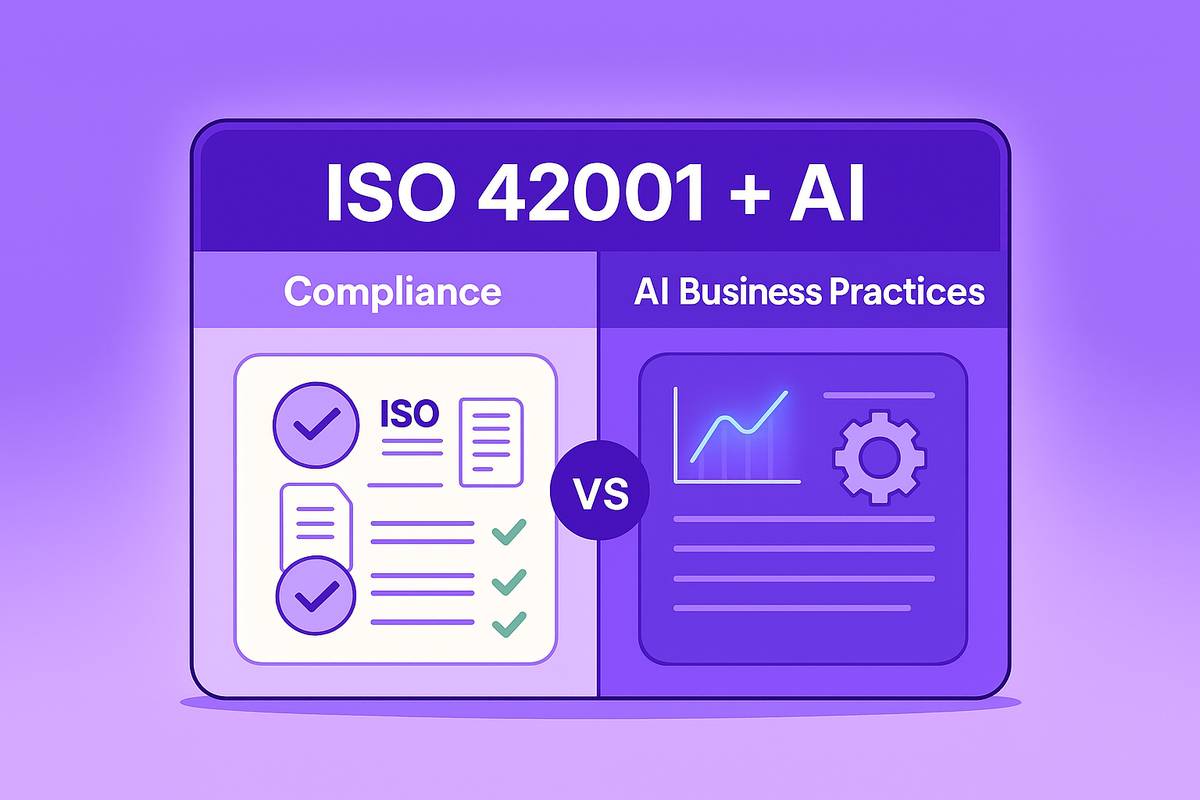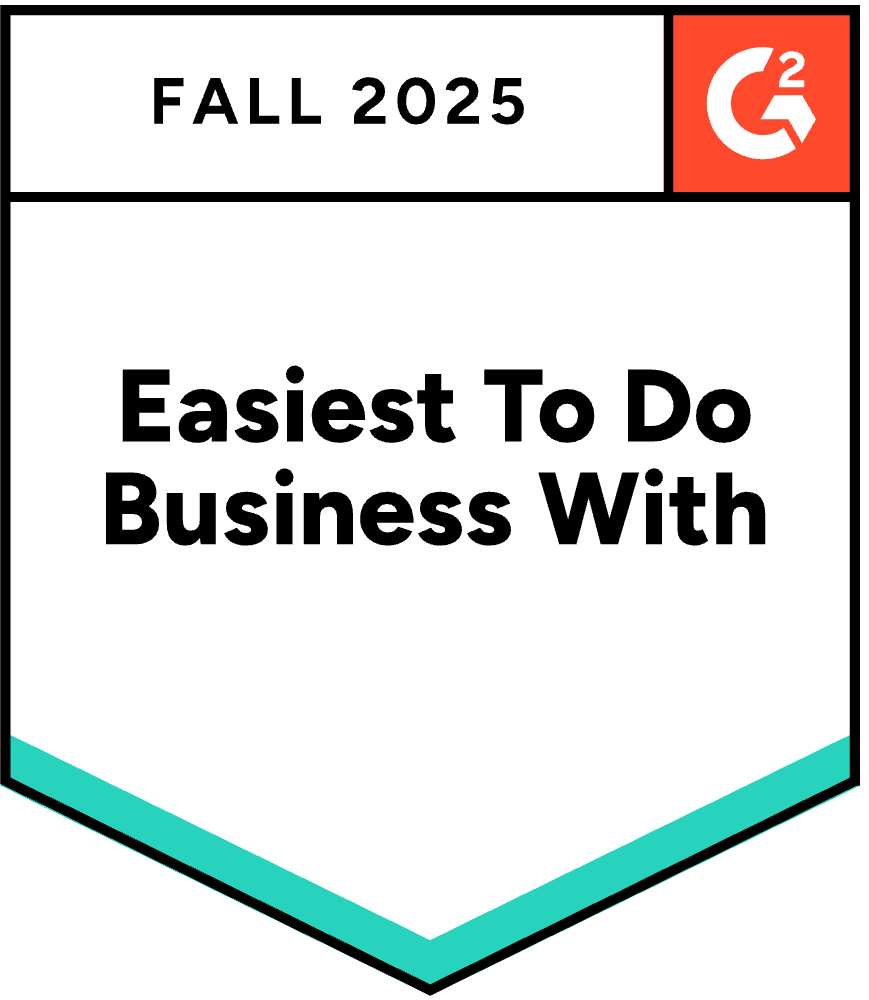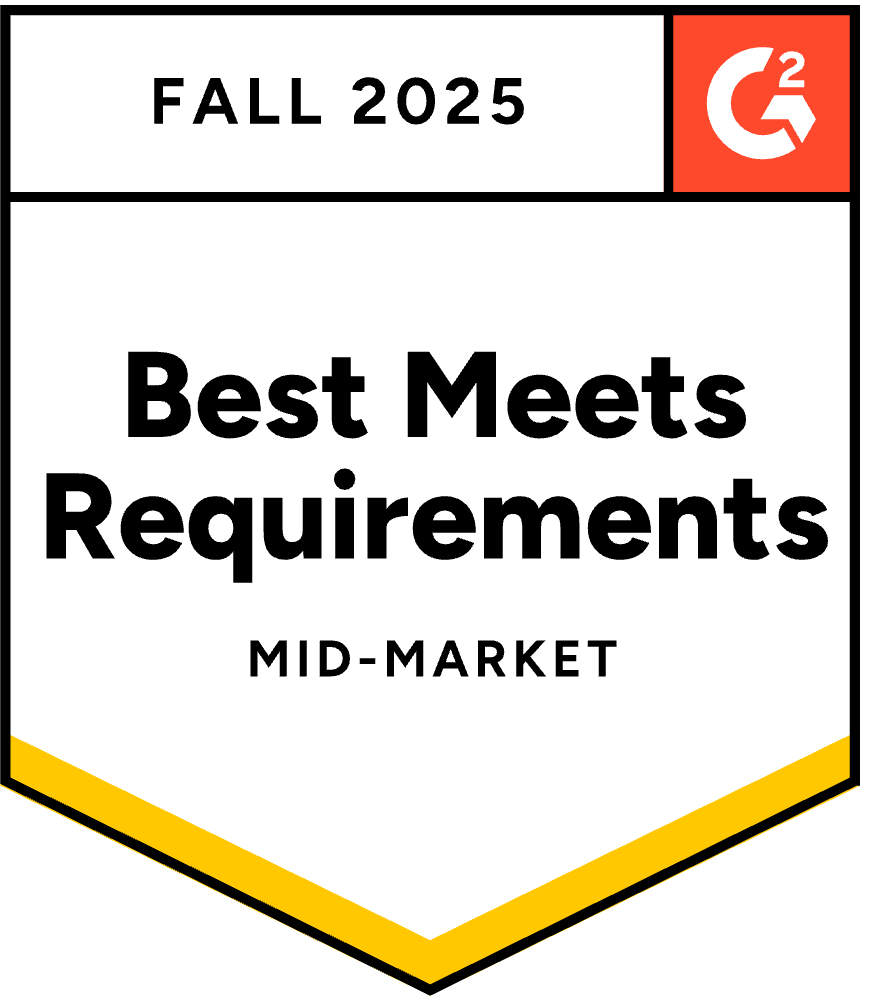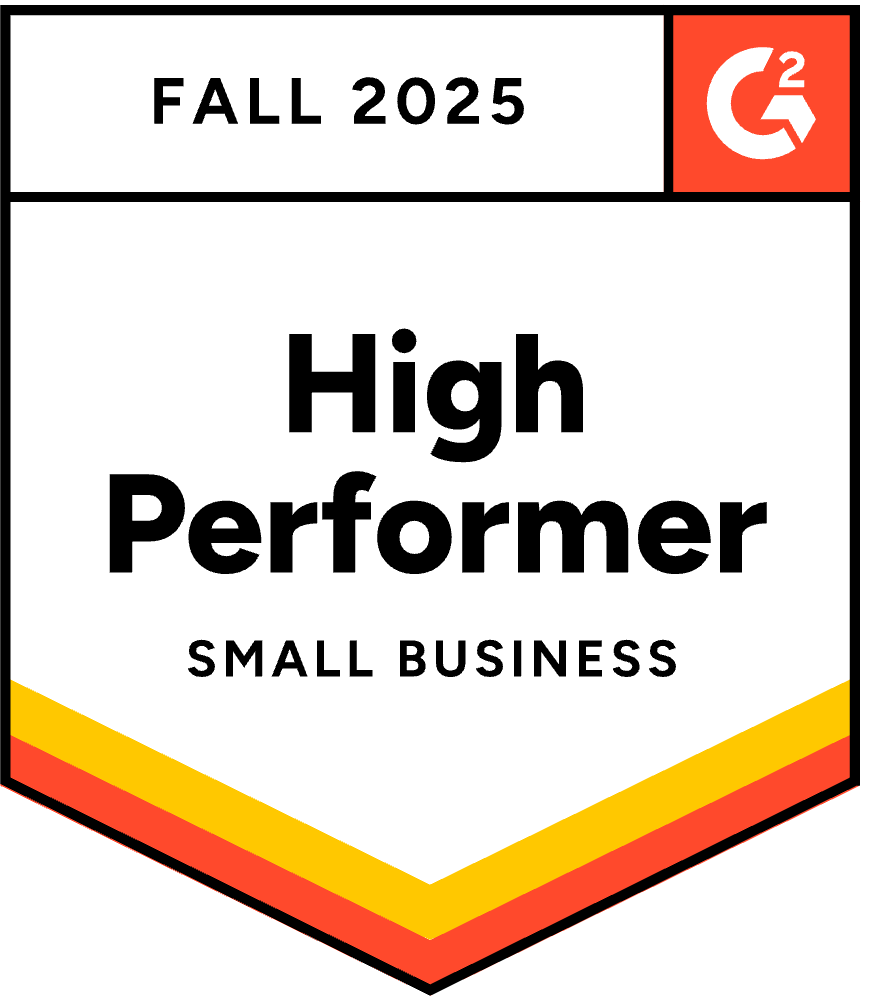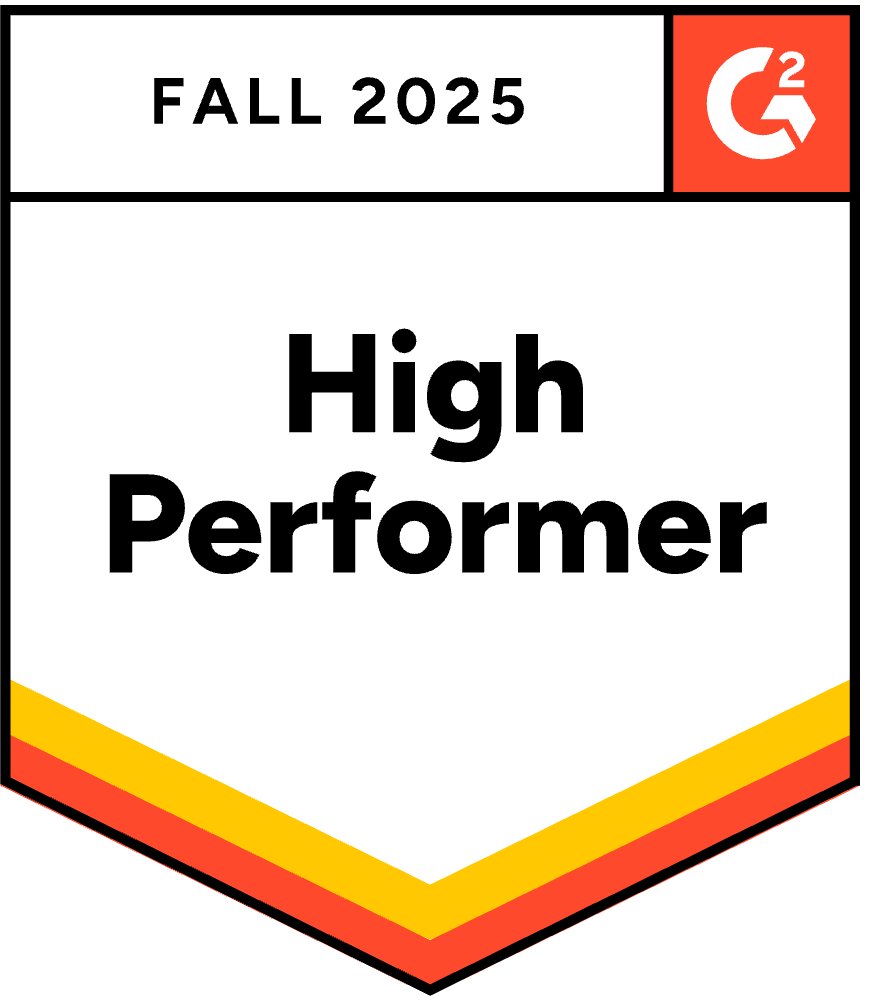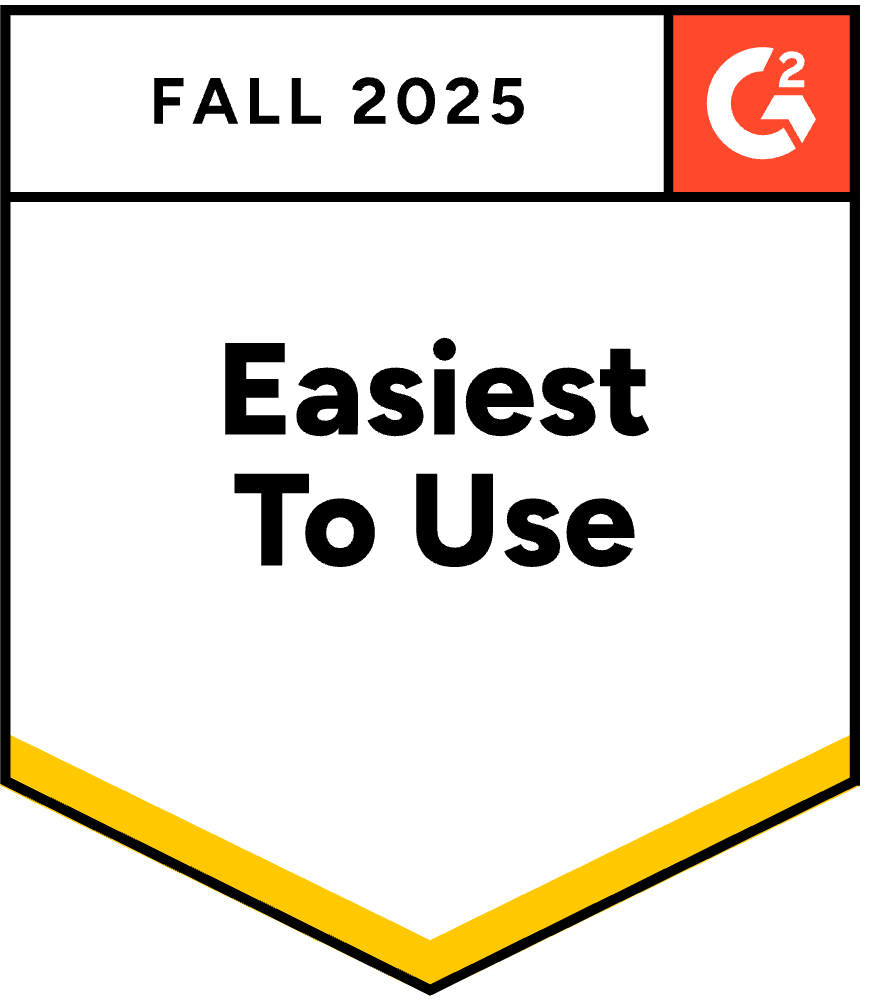A Simple RFP Go/No-Go Decision Framework
March 6, 2025
By
Evie Secilmis

Guest post written by Matthew Graybiel: Matt Graybiel is a seasoned pre-sales leader with deep expertise in technical sales, identity management, and security solutions. Over his career, he has built and led high-performing sales engineering teams, overseen countless RFP and proposal processes, and developed strategies to improve efficiency in complex sales cycles. Passionate about leveraging technology to streamline decision-making, Matt shares insights from real-world experience to help sales teams work smarter. The views expressed in this article are his own and do not reflect those of his employer.
Let's be honest: the RFP process can be a grind. For sales and pre-sales teams, it’s often a long, tedious time suck. You're asked to justify every proposal, which makes sense—no one wants to waste energy on a deal that’s going nowhere. The problem? RFPs often land with little context, leaving your team to spend hours just figuring out if it's worth the effort. This is where making a sharp rfp go no go decision is so critical. It’s about protecting your time and focusing your best efforts on the opportunities you can actually win.
This leads to a common issue: sales reps feel pressured to submit every RFP, and the RFP team gets buried in requests that aren’t a great fit. The result? Wasted time, misaligned priorities, and a lot of frustration. A proposal manager once told me the worst thing she could hear from a sales rep was, "Of course it’s qualified, I found it on the internet." That pretty much sums up the problem.
But what if there were a way to speed up the review process and quickly decide if an RFP is a GO or NO GO? That’s where AI-driven tools like Iris come in.
What is an RFP Go/No-Go Decision?
A Go/No-Go decision is a formal process your team uses to determine whether a Request for Proposal (RFP) is worth pursuing. Instead of jumping on every opportunity that lands in your inbox, you take a step back and evaluate it against a set of predefined criteria. This isn’t about gut feelings or how persuasive a sales rep is. It’s a structured, objective checkpoint that forces you to ask the tough questions before you invest a single minute of your team’s valuable time into writing a response. Think of it as a filter that separates the promising opportunities from the time-wasting dead ends.
This process brings together key stakeholders—like sales, pre-sales, product, and legal—to make a collective, informed choice. By creating a standardized framework, you ensure that every RFP is measured by the same yardstick. This consistency is key to making smarter, more strategic decisions that align with your company’s goals, rather than chasing every shiny object that comes along. The ultimate goal is to focus your energy where it counts: on the deals you can and should win.
The Philosophy: It's About Eliminating Losers
Let’s reframe how we think about this process. The point of a Go/No-Go decision isn’t necessarily to pick the winners; it’s to proactively identify the deals you are likely to lose. This subtle shift in mindset is a game-changer. It moves you from a reactive, hopeful stance to a strategic, defensive one. You’re not just looking for reasons to say "yes." You’re actively searching for red flags and disqualifiers that give you a clear reason to say "no," allowing you to bow out gracefully and early.
By focusing on eliminating the long shots, you protect your most valuable asset: your team's time. Every hour spent on a low-probability proposal is an hour not spent on a high-potential one. This philosophy ensures that your resources are concentrated on opportunities where you have a genuine competitive advantage, a strong relationship, and a clear path to victory. It’s about playing smarter, not harder, and saving your best efforts for the battles you can actually win.
Key Benefits of a Formal Process
Implementing a formal Go/No-Go process might feel like adding another step, but the long-term benefits are massive. It introduces discipline and strategy into what can often be a chaotic part of the sales cycle. When you stop reacting and start evaluating, you gain control over your pipeline and your resources. This structured approach helps align your entire team around a common goal, ensuring everyone is working on proposals that truly matter to the business and have a realistic chance of closing.
Improve Planning and Forecasting
When you make better decisions about which RFPs to pursue, you immediately improve your chances of winning new business while lowering the cost of your proposal efforts. A formal process gives you a clearer, more realistic view of your sales pipeline. You can forecast revenue more accurately because your pipeline isn’t inflated with deals you were never going to win. This also helps with resource planning. Knowing which RFPs are a "go" allows you to allocate writers, subject matter experts, and solution engineers more effectively, preventing burnout and last-minute scrambles.
Ensure Objective Decision-Making
Sales is often driven by optimism, but "happy ears" can lead to a lot of wasted effort. A formal Go/No-Go process removes emotion and personal bias from the equation. It forces an objective look at the facts of the opportunity. Is there an incumbent? Do we meet all the mandatory requirements? Is the budget realistic? By using a consistent set of criteria, you ensure you don’t spend too much time on proposals that are unlikely to succeed, regardless of how enthusiastic a single team member might be.
How to Build Your Go/No-Go Framework
Creating a Go/No-Go framework doesn’t have to be complicated. The goal is to build a tool that helps your team make consistent, strategic decisions quickly. You can start with something simple and add more detail as you learn what works for your business. The best framework is one that your team will actually use, so focus on clarity and ease of use. A go/no-go decision template is simply a tool to guide this conversation, ensuring you cover the most important bases before committing resources.
Whether you choose a simple set of questions, a checklist, or a detailed scoring matrix, the key is to customize it to your company’s unique strengths, weaknesses, and strategic goals. Before you even begin your evaluation, you need to understand the RFP's core requirements. An AI deal desk solution like Iris can accelerate this initial step by instantly summarizing a dense RFP, pulling out key requirements and potential red flags that feed directly into your Go/No-Go assessment, saving you hours of manual review.
A Simple Three-Question Framework
If you’re just starting out, the best approach is to keep it simple. You can get incredible clarity by forcing your team to answer just three fundamental questions about every opportunity. This framework is easy to remember and quick to execute, making it a perfect entry point into formalizing your decision-making process. It cuts through the noise and gets straight to the heart of what makes an opportunity a good fit for your business. Think of it as the essential first pass for any RFP that comes your way.
Can You Win It?
This question is all about your competitive position and strategic alignment. It’s not just about whether you *can* do the work, but whether you have a realistic shot at being selected. Consider your relationship with the customer. Have you spoken with them before? Do they know who you are? You should also evaluate the competitive landscape. Do you know who you’re up against? Is there an entrenched incumbent? Finally, ask if the opportunity matches your company's long-term goals. A "yes" here means you have a clear strategic advantage.
Can You Do It?
This is the logistical and operational reality check. Assuming you win, can your company actually do the work required? Do you have the right products, features, and services to meet all the mandatory requirements? Think about your team’s bandwidth and expertise. Do you have the people available to deliver the project successfully and on time without pulling them from other critical work? A "yes" here means you have the operational capacity to deliver on your promises without causing internal chaos or compromising quality.
Do You Want It?
This final question is about profitability and strategic value. Just because you can win an opportunity and can do the work doesn’t always mean you *should*. Will this project be profitable? Are the terms and conditions reasonable, or are they asking for the moon on a shoestring budget? Consider the client themselves—are they a company you want to be in business with? The goal is to choose projects that help your company grow, not ones that will become a drain on resources and morale. A "yes" here means the deal is financially and strategically attractive.
A More Structured Three-Tiered Approach
Once you’ve mastered the simple framework, you might be ready for a more structured approach. A tiered system allows you to apply the right level of scrutiny to different types of opportunities. A small, straightforward deal might only need a basic check, while a large, complex RFP deserves a more rigorous analysis. This flexibility ensures your process is efficient without sacrificing diligence. It allows you to scale your evaluation efforts to match the size and strategic importance of the opportunity at hand.
Basic: The Core Five Questions
This is a step up from the three-question framework and works well for most day-to-day opportunities. Expand your list to five to seven core questions covering the client relationship, solution fit, competitive landscape, profitability, and strategic value. The key here is to look for showstoppers. If you find yourself answering "no" or even "yes, but..." to several of the questions, it’s a strong indicator that the opportunity might not be a good fit. This method is fast, straightforward, and provides a solid foundation for a confident Go or No-Go decision.
Intermediate: The Checklist Method
For more significant opportunities, a checklist can provide a more objective and thorough evaluation. Create a list of 15-20 true/false or yes/no statements that reflect your ideal customer profile and project criteria. Questions might include "We have an existing relationship with the client," "The solution required is a core offering," or "We have a strong competitive differentiator." The real power of this method comes from customization. You should customize your checklist based on what you've learned from past wins and losses to refine what a great opportunity truly looks like for your business.
Advanced: The Weighted Decision Matrix
For your most strategic, high-value RFPs, a weighted decision matrix is the gold standard. This method removes nearly all subjectivity by assigning a weight to different criteria based on their importance. For example, "Existing Relationship" might be weighted higher than "Profit Margin." You then rate each factor on a scale (e.g., 1 to 5) and multiply it by the weight to get a total score. By setting a minimum threshold score, you create a clear, data-driven benchmark for what constitutes a "Go," ensuring your biggest bets are also your smartest ones.
Five Steps to Establish Your Process
Putting a formal Go/No-Go process in place is a project in itself, but it’s one that pays dividends almost immediately. By following a few clear steps, you can create a system that is both effective and easy for your team to adopt. The key is to involve the right people from the start and to clearly define what you hope to achieve. A well-established process helps your company avoid wasting resources on bad projects and focus on opportunities that will genuinely help you grow.
- Assemble Your Team: Identify the key stakeholders who should be part of the decision-making process. This typically includes representatives from sales, pre-sales or solutions engineering, product management, and sometimes finance or legal.
- Define Your Criteria: Work with the team to build your decision framework. Whether it's a simple Q&A, a checklist, or a weighted matrix, agree on the factors that matter most to your business.
- Set the Rules of Engagement: Clarify who is responsible for initiating the Go/No-Go review, who has the final say, and what the timeline is for making a decision. A clear process prevents bottlenecks.
- Train Your Team: Don’t just send out a new template and hope for the best. Hold a training session to explain the "why" behind the process and walk through how to use the tools you’ve created.
- Review and Refine: Your first draft won’t be perfect. Schedule regular check-ins (e.g., quarterly) to review the process, analyze its impact on win rates, and make adjustments based on what you’ve learned.
Keeping Your Decision Tools Relevant
A Go/No-Go framework is not a static document. Your business is constantly evolving, and your decision-making tools need to evolve with it. What defined a perfect opportunity last year might not be the right fit today. Maybe you’ve launched a new product line, entered a new market, or shifted your strategic priorities. If your evaluation criteria don’t reflect these changes, you risk pursuing deals that are no longer aligned with where your company is headed.
Make it a habit to review your Go/No-Go checklist or matrix at least once or twice a year. Analyze your recent wins and losses. Are there common themes? Perhaps you’re consistently losing to a specific competitor, or maybe you’re winning deals that turn out to be unprofitable. Use these insights to fine-tune your criteria and their weightings. The checklists and tools you use should grow and change as your business goals and market conditions change, ensuring they remain a powerful strategic asset.
Strategic Questions to Guide Your Decision
Your Go/No-Go framework is only as good as the questions you ask. To get you started, here is a list of strategic questions broken down by category. You can use these as a foundation for building your own custom checklist or decision matrix. These questions are designed to move the conversation beyond a simple "can we do it?" and force a deeper look at the opportunity's overall fit. They encourage your team to think critically about the customer, your own capabilities, and the long-term value of the deal.
Questions About the Customer and Competition
Understanding the context surrounding the RFP is critical. You’re not responding in a vacuum; there’s a customer with a history and a competitive field you need to assess. If you’re the current provider (the incumbent), your chances are generally much higher. But if you’ve never spoken to the customer and the RFP has highly specific requirements that seem tailored for a competitor, you might just be "column fodder" used to drive down the price for their preferred vendor. A cold RFP is always a risk, so digging into these questions is essential.
- Do we have an existing relationship with this customer?
- Have we helped shape the requirements or solution vision?
- Do we know who the competition is, and can we realistically beat them?
- Is there an incumbent, and if so, why are they looking to switch?
- Are the requirements written in a way that seems to favor a competitor?
Questions About Your Capabilities and Resources
This category is all about an honest self-assessment. It’s tempting to stretch your capabilities to win a big deal, but over-promising and under-delivering can damage your reputation and burn out your team. Be realistic about what you can truly offer and the resources required to succeed. Does your company have the money, tools, and people to finish the project without compromising other commitments? A clear-eyed view of your internal capacity is crucial for ensuring that a win on paper doesn’t become a loss in practice.
- Does our solution meet 100% of the mandatory requirements?
- Do we have a unique differentiator that sets us apart from the competition?
- Do we have the right subject matter experts available to write a winning proposal?
- Do we have the staff and resources to deliver the project on time and on budget if we win?
- Are there any requirements that would require significant product development or risky partnerships?
Questions About the Opportunity's Strategic Value
Not all revenue is created equal. Some deals are transactional, while others are transformational. Look beyond the immediate dollar value and consider the long-term strategic implications of winning the business. A smaller deal with a prestigious logo could be more valuable than a larger one with a difficult client in a dead-end market. Ask yourself if this customer could become a strong account or a good case study later on. Answering these questions helps ensure you’re investing your time in partnerships that will pay dividends for years to come.
- Is the potential revenue and profit margin acceptable?
- Does this opportunity align with our company's strategic direction?
- Could this project serve as a gateway into a new market or industry?
- Would this client be a prestigious logo we could use for future marketing?
- Are the contract terms and conditions fair and reasonable?
AI: Your RFP Co-Pilot, Not the Pilot
Let’s be clear: AI should not be used to write RFP responses from scratch. Experienced RFP writers know how to craft responses that reflect the company’s voice, align with customer expectations, and make the proposal feel tailored and authentic. AI might generate a first draft, but it can’t replace the finesse of a skilled professional.
Where AI can help is in evaluating whether an RFP is worth the effort. Reading through a hundred-plus-page document, piecing together key details, and then making a recommendation to leadership on whether to go after the deal or walk away is a huge time commitment. AI can take on that heavy lifting.
How AI Can Streamline Your RFP Review
For example, I recently took a 150-page RFI and ran it through Iris. A sales rep told me it would take her about 72 hours to go through the document, summarize the key details, and make a recommendation to sales leadership and the RFP team. Iris did it in 30 seconds.
That’s not just a small time-saver. That’s a game changer. Instead of spending three full workdays buried in a document, the sales rep and pre-sales team had what they needed instantly, so they could focus on strategy instead of just trying to get through the reading material.
Then, to test it further, I ran another RFP through Iris—one we had already committed to pursuing. The results were impressive. The AI-generated summary was nearly identical to the one put together by the account team. That kind of validation proves that AI can quickly find the right information, making the review process faster and more efficient.
### Using AI to Quickly Qualify Opportunities
The goal of a "bid/no-bid" process isn't just to find deals you might win; it's to quickly identify the ones you're likely to lose so you don't waste resources on them. This is where AI transforms the qualification stage. Instead of your team getting bogged down in manual review, AI can instantly analyze RFP documents and pull out the critical details. This allows you to establish a Go/No-Go process that’s both fast and effective, helping you sidestep mismatched projects and focus your energy on opportunities that will actually help your company grow.
Finding Answers to Your Strategic Questions
A solid decision-making framework helps you figure out early on if a project is a good fit. Using a Go/No-Go decision template lets you consistently evaluate opportunities against key strategic questions about customer needs, your internal capabilities, and the competitive landscape. An AI-powered platform like Iris acts as your research assistant, scanning the document for answers to these questions in seconds. It can flag mandatory requirements you can’t meet, identify mentions of a competitor, or highlight key deliverables—giving your team the data it needs to make an informed, strategic call without losing days to manual review.
Can Iris AI Tools Make Your RFP Review Faster?
Traditionally, reviewing an RFP means skimming through pages of legalese, trying to identify the important stuff like deadlines, compliance requirements, deal-breakers, competitive insights, and technical specs. Iris automates this process and lays it all out in a clear summary.
The sales rep or pre-sales person uploads the RFP, and Iris extracts the most relevant details. Instead of making a GO or NO GO recommendation itself, it gives the sales and pre-sales teams everything they need to make that decision quickly and confidently. This ensures that the RFP team and leadership only focus on deals that have a real shot at closing instead of wasting time on low-probability opportunities.
Using AI for a Better RFP Go/No-Go Decision
A GO decision happens when everything lines up: the opportunity fits our strengths, we have an existing relationship, or we’re in a strong competitive position. Maybe the deal has strategic value beyond just revenue, like giving us a foothold in a new market. If we have a high win probability, it makes sense to GO.
A NO GO decision is just as important. If the opportunity is a poor fit, the incumbent has a lock on the deal, or customer engagement is low, it’s probably not worth the effort. Tight deadlines, limited resources, or heavy customization requirements that would make the deal unprofitable are also solid reasons to walk away.
### Data-Driven Decisions Backed by Benchmarks A formal "Go/No Go" process is about making smart, strategic choices instead of relying on gut feelings. It’s a framework that helps you objectively evaluate whether an opportunity is worth your team's valuable time and resources. The goal isn't just to chase every potential deal; it's to focus your energy on the ones you can actually win. By establishing clear criteria, you can decide if a proposal is a good fit, which saves an incredible amount of time and helps improve your win rate. This is where AI-powered tools can make a huge difference. Instead of spending hours manually digging for data points, an AI assistant can quickly surface the critical information needed to benchmark the opportunity against your established criteria, ensuring your decision is backed by facts, not just optimism.
What to Do After the Decision is Made
Making the Go/No-Go decision is a critical milestone, but it’s not the end of the road. What you do next is just as important, whether you’ve decided to pursue the opportunity or politely decline. Your follow-up actions set the tone for your relationship with the potential client and determine how efficiently your team moves forward. A clear, well-defined process for post-decision steps ensures that no time is wasted and that every action reinforces your company's professionalism and strategic focus. It’s about turning a simple choice into a deliberate business strategy that pays off in the long run.
If the answer is "no," the priority is to communicate that decision in a way that preserves the relationship for future opportunities. A thoughtful "no-bid" response can actually build goodwill. If the answer is "go," the focus immediately shifts to mobilization. It’s time to assemble the team, define the strategy, and kick off a coordinated effort to build a winning proposal. Both paths require distinct, intentional actions to ensure the best possible outcome, either by keeping a door open or by putting your team in the strongest position to win the deal.
### Communicating a "No-Go" Decision When you decide not to bid on an RFP, how you communicate that choice matters. Sending a polite and professional "no-bid" letter is a strategic move that respects the customer's time and keeps the door open for future collaborations. Keep the message brief and positive. You don’t need to write a novel; simply state that you won't be submitting a proposal at this time. You can briefly explain why—for instance, that the project falls outside your core expertise or that you lack the resources to deliver the quality of work you’d want. Thank them for the opportunity and express your interest in working together down the line. This simple act of professional courtesy can maintain a positive relationship and position your company as a thoughtful, strategic partner. ### Moving Forward with a "Go" Decision Once you’ve made the "Go" decision, it’s time to act. The first step is to assemble your response team, bringing together the right people from sales, pre-sales, and any other relevant departments. Hold a kickoff meeting as soon as possible to align everyone on the strategy, key messaging, and individual responsibilities. This is where you’ll map out a clear timeline with milestones for drafting, reviewing, and finalizing the proposal to ensure you meet the deadline without a last-minute scramble. With a solid plan in place, your team can start building a compelling response. This is also the point where an AI-powered platform can transition from an evaluation tool to a content generation partner, helping your team quickly pull accurate, approved answers to get the first draft done in record time.
Why You're Still the Expert in an AI-Assisted RFP
One of the biggest things I’ve learned about generative AI is that it’s best treated as an assistant, not an expert. AI can process massive amounts of data and summarize information way faster than a human ever could, but that doesn’t mean it’s always right. Fact-check, gut-check, and don’t blindly trust whatever the AI spits out.
Whether it’s reviewing an RFP, making a GO or NO GO decision, or even drafting a response, AI should support the process, not take it over. Sales reps and pre-sales professionals bring experience and intuition to the table, and that’s something AI just can’t replicate.
Fostering a Winning Go/No-Go Culture
A solid Go/No-Go framework is only as good as the culture that supports it. When your team feels pressured to chase every opportunity, even the best decision matrix won’t make a difference. Building a culture where "No-Go" is seen as a strategic win requires a shift in mindset, from celebrating activity to celebrating smart, calculated decisions. It’s about creating an environment where everyone understands that the goal isn’t to respond to the most RFPs, but to win the right ones. This means leadership needs to champion the process, reward thoughtful analysis over sheer volume, and make it safe for sales reps to walk away from deals that aren't a good fit.
Viewing "No-Go" as a Strategic Move
It’s easy to see a "No-Go" as a missed opportunity, but it’s actually the opposite. Every time you say no to a long-shot RFP, you’re saying yes to something more important: giving your team the time and energy to focus on deals you can actually win. Saying no protects your most valuable resources—your team’s expertise and morale. It ensures they aren’t burning out on proposals that were doomed from the start. This strategic approach to qualification is central to an effective Go/No-Go process, allowing you to prioritize quality over quantity and dedicate your best efforts to the opportunities that truly align with your company’s strengths and goals.
Balancing Data with Human Insight
As we've discussed, AI is a powerful assistant for sifting through dense RFP documents to find the data you need for a Go/No-Go decision. But data alone doesn't tell the whole story. The most successful teams combine AI-driven insights with their own experience and intuition. An AI tool can tell you if you meet the technical requirements, but it can't gauge the strength of your relationship with the customer or sense the competitive landscape. That’s where your team’s expertise comes in. Use AI-powered features to get the facts quickly, but always apply a human gut-check before making the final call. This balance ensures your decisions are both data-informed and grounded in real-world sales wisdom.
Beyond Speed: The Strategic Value of AI in RFPs
Using AI to evaluate RFPs doesn’t just save time. It helps organizations focus on high-impact deals instead of getting lost in low-value opportunities. Cutting review time from days to minutes allows sales leaders to make faster, smarter decisions. When you only go after deals that have a real shot at closing, you improve your win rates and free up resources for the opportunities that matter most.
The Go/No-Go Beyond the Initial RFP
Think of the Go/No-Go decision less as a single gate you pass through and more as a mindset you carry throughout the entire sales cycle. As new information surfaces—about the customer, the competition, or the project's scope—it's crucial to keep asking: "Is this still the right deal for us?" A strong Go/No-Go strategy isn't about finding every deal you *might* win; it's about identifying the ones you're likely to lose early on. This continuous evaluation keeps everyone focused on high-value deals and prevents the team from getting bogged down chasing opportunities that don't align with your strengths.
Making AI Your Most Valuable RFP Partner
Nobody enjoys the RFP process. Well, maybe except the RFP team, but let’s be honest—they’re built differently. For the rest of us, AI can take a lot of the pain out of it. Moving from a reactive, “let’s submit everything” approach to a strategic, AI-powered model means sales reps and pre-sales teams can work smarter, not harder. AI tools like Iris help cut through the noise, making it easier to decide which RFPs deserve a GO and which ones should be a NO GO.
That said, AI should never be a crutch for writing RFP responses. RFP writers bring experience, strategy, and the ability to tailor responses in a way that AI just can’t match. The best way to use AI is where it excels—evaluating and summarizing opportunities fast, so the team can focus on winning the right deals.
If your sales team is drowning in RFPs, it’s time to rethink the approach. Smart, AI-powered decision-making isn’t just a competitive advantage. It’s the future of sales efficiency.
Disclaimer: I’ve spent my career in pre-sales leadership, working closely with sales teams and leading multiple proposal teams along the way. The insights in this article come from real-world experience and lessons learned over the years. The views expressed here are solely mine and do not reflect those of my employer.
Frequently Asked Questions
How do I get my sales team on board with a Go/No-Go process if they’re used to chasing every single lead? This is a common hurdle, and it’s all about framing. Instead of presenting it as a restrictive gate, frame it as a strategic tool designed to protect their time and increase their win rates. Explain that every hour spent on a low-probability RFP is an hour they can't spend cultivating a relationship with a high-potential client. The goal isn't to reduce their pipeline, but to fill it with opportunities they are far more likely to close, which ultimately leads to better results for them and the company.
Is a formal Go/No-Go process overkill for smaller deals or for a small team? Not at all, but your process should match the size of the opportunity. A formal framework doesn't have to be a complex, multi-page matrix for every deal. For smaller, more straightforward RFPs, using the simple three-question framework—Can we win it? Can we do it? Do we want it?—is often enough. The principle remains the same: take a moment to think strategically before you commit resources. The goal is to make the process efficient and scalable, not to create unnecessary work.
The post says AI is an "assistant, not an expert." What does that look like in practice? Think of it this way: an AI tool like Iris can read a 200-page RFP in seconds and hand you a summary of all the critical requirements, potential red flags, and key deadlines. That's the work of an assistant. Your team, as the experts, takes that summary and adds the human element. You evaluate the competitive landscape based on your industry knowledge, gauge the strength of your client relationship, and make the final strategic call. The AI provides the data; your team provides the wisdom.
What’s the most common mistake companies make when they first implement a Go/No-Go process? The biggest mistake is making it too complicated from the start. Teams get excited and build a massive spreadsheet with 50 criteria and a complex weighting system. The result is a process so cumbersome that no one wants to use it, and it gets abandoned after a few weeks. It's far better to start with a simple checklist of 5-10 core questions, get your team comfortable using it, and then refine it over time based on what you learn from your wins and losses.
How do you actually say "no" to a potential customer without damaging the relationship? Communicating a "no-go" decision is a chance to show you're a thoughtful and strategic partner. Send a brief, professional email thanking them for the opportunity. You don't need to go into exhaustive detail, but you can provide a simple, honest reason, such as the project falling outside your core focus or not having the immediate resources to deliver the quality they deserve. End by expressing interest in future opportunities that are a better fit. This kind of transparency respects their time and keeps the door open.
Key Takeaways
- Treat "No-Go" as a strategic win: Saying no to a mismatched RFP isn't a failure; it's a smart business decision that frees up your team to concentrate on deals you can actually win. The goal is to protect your resources for the best opportunities, not to chase every possibility.
- Create a consistent decision-making process: Remove guesswork and emotion by establishing a formal framework for every RFP. Start simply by asking if you can win the deal, do the work, and if the project is strategically desirable, ensuring every opportunity is measured against the same objective criteria.
- Use AI to accelerate analysis, not replace judgment: Let AI do the heavy lifting by instantly summarizing lengthy RFPs and highlighting key requirements or red flags. This gives your team the data they need in seconds, allowing them to spend their time on high-level strategy and applying their own experience to make the final Go/No-Go call.
Related Articles
Share this post
Link copied!



